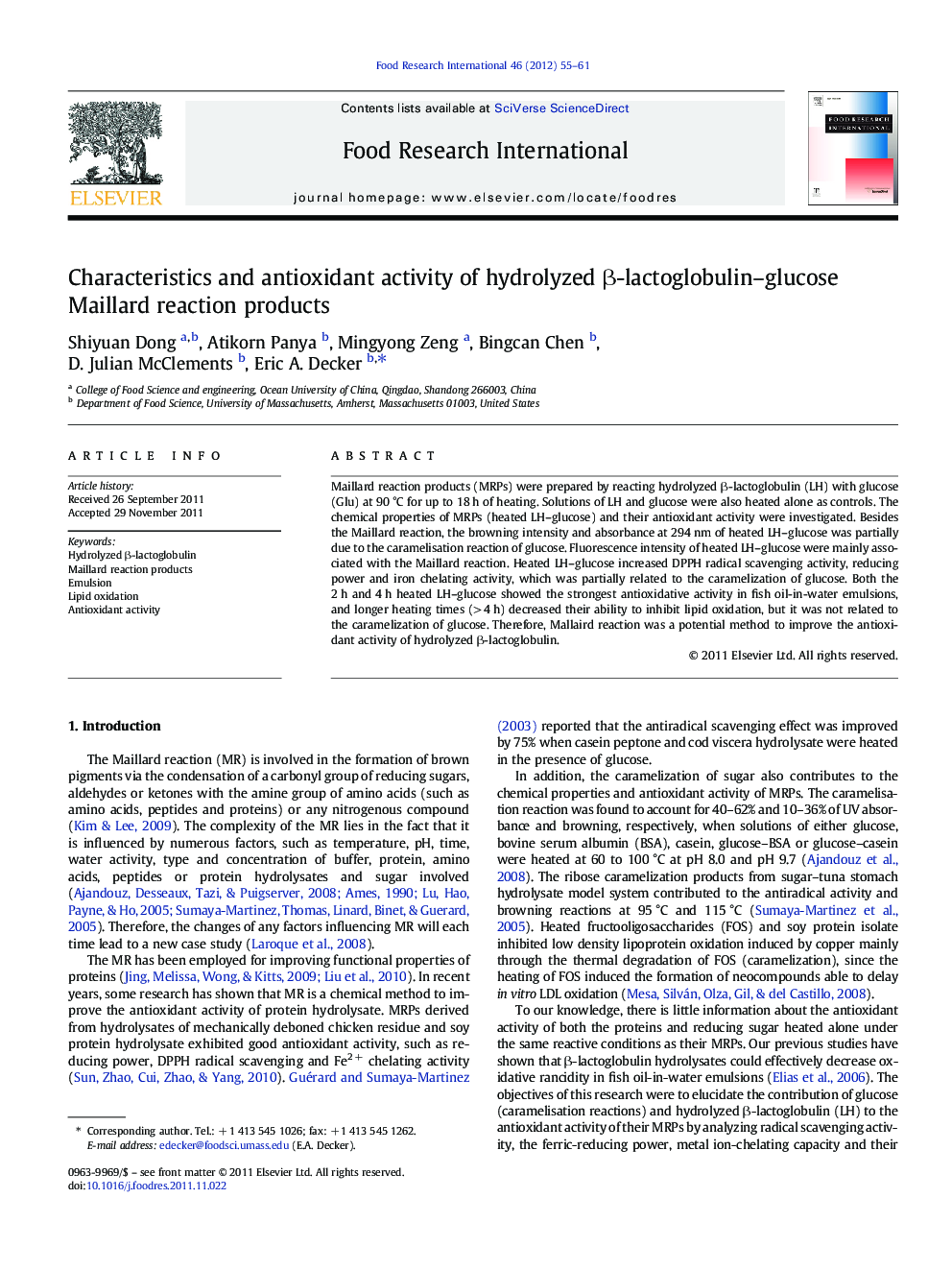| Article ID | Journal | Published Year | Pages | File Type |
|---|---|---|---|---|
| 4561886 | Food Research International | 2012 | 7 Pages |
Maillard reaction products (MRPs) were prepared by reacting hydrolyzed β-lactoglobulin (LH) with glucose (Glu) at 90 °C for up to 18 h of heating. Solutions of LH and glucose were also heated alone as controls. The chemical properties of MRPs (heated LH–glucose) and their antioxidant activity were investigated. Besides the Maillard reaction, the browning intensity and absorbance at 294 nm of heated LH–glucose was partially due to the caramelisation reaction of glucose. Fluorescence intensity of heated LH–glucose were mainly associated with the Maillard reaction. Heated LH–glucose increased DPPH radical scavenging activity, reducing power and iron chelating activity, which was partially related to the caramelization of glucose. Both the 2 h and 4 h heated LH–glucose showed the strongest antioxidative activity in fish oil-in-water emulsions, and longer heating times (> 4 h) decreased their ability to inhibit lipid oxidation, but it was not related to the caramelization of glucose. Therefore, Mallaird reaction was a potential method to improve the antioxidant activity of hydrolyzed β-lactoglobulin.
► The antioxidant activity of protein hydrolysate–glucose MRPs was investigated. ► The extent of Maillard reaction affects the antioxidant activity of MRPs. ► Caramelization of glucose is related to the antioxidant activity of MRPs.
